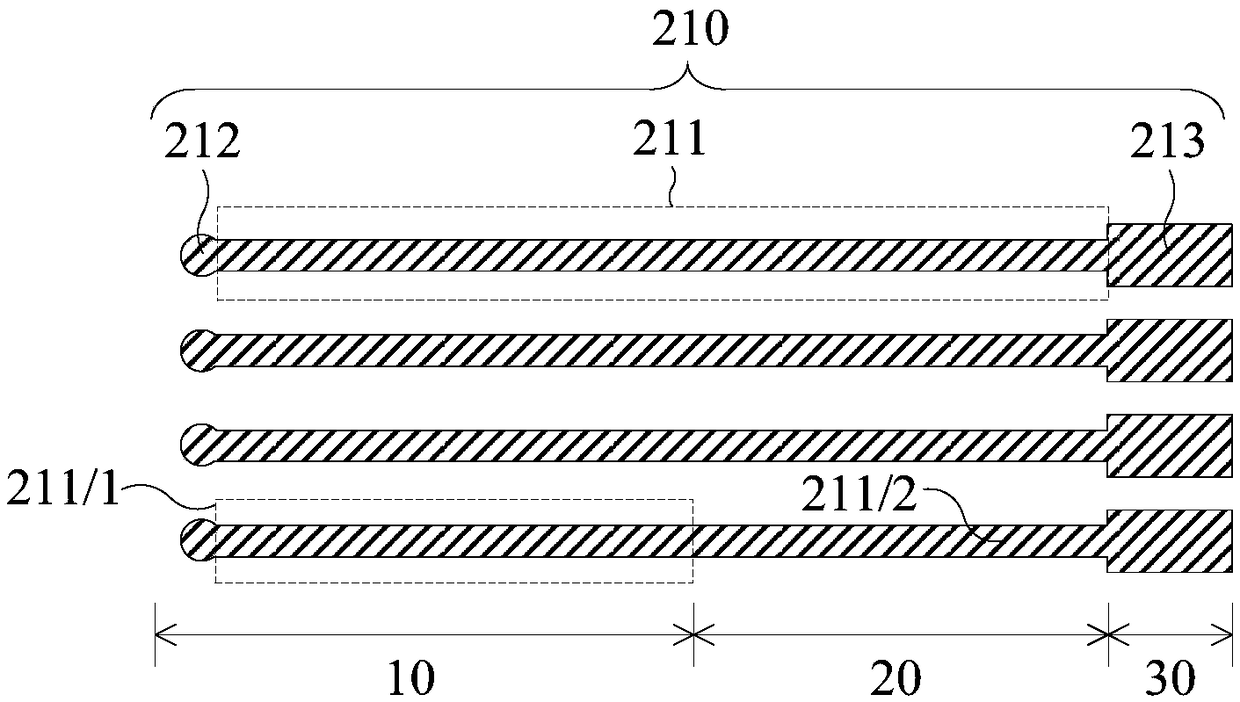Flexible neural electrode and implantation method of flexible neural electrode
A flexible and neural technology, applied in the field of neural electrodes, can solve the problems of acute brain injury, electrode failure, micro-movement, etc., and achieve the effect of reducing acute injury and long-term stable measurement
- Summary
- Abstract
- Description
- Claims
- Application Information
AI Technical Summary
Problems solved by technology
Method used
Image
Examples
preparation example Construction
[0076] Step 11, preparation of the sacrificial layer (the material of the sacrificial layer is Al)
[0077] 1) Silicon wafer cleaning: place a silicon wafer with a diameter of 4 inches in a clean petri dish, ultrasonically clean it with acetone, isopropanol and water for 10 minutes (power 30W), blow dry with nitrogen, and place the silicon wafer on a 105°C hot plate Heat it up for 3 minutes to remove water vapor, and then clean it with oxygen plasma for 3 minutes after the temperature drops to room temperature (power 100W).
[0078] 2) Coating: place the clean silicon wafer in the center of the suction cup of the coating machine and fix it, set the parameters of the coating machine (500rpm 5splus 2000rpm 60s), drop 4mL of S1813 photoresist in the center of the silicon wafer with a dropper, and start coating .
[0079] 3) Pre-baking: Place the silicon wafers that have been uniformly glued on a hot plate at 115°C, bake for 3 minutes, and then take them down to room temperature....
PUM
 Login to View More
Login to View More Abstract
Description
Claims
Application Information
 Login to View More
Login to View More - R&D
- Intellectual Property
- Life Sciences
- Materials
- Tech Scout
- Unparalleled Data Quality
- Higher Quality Content
- 60% Fewer Hallucinations
Browse by: Latest US Patents, China's latest patents, Technical Efficacy Thesaurus, Application Domain, Technology Topic, Popular Technical Reports.
© 2025 PatSnap. All rights reserved.Legal|Privacy policy|Modern Slavery Act Transparency Statement|Sitemap|About US| Contact US: help@patsnap.com



